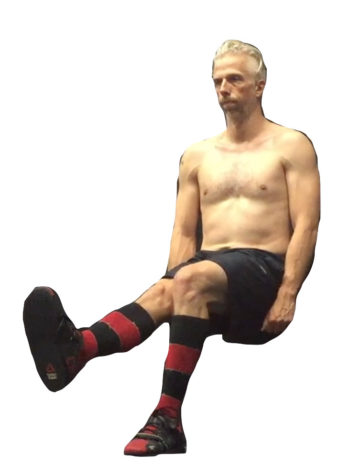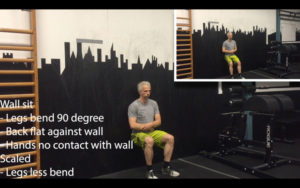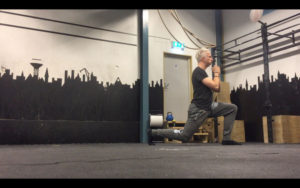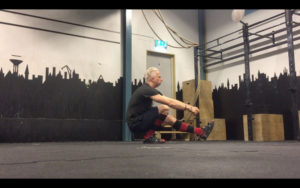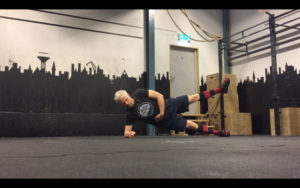Isometric leg exercises
Isometric training is often an overseen way of training. The traditional concentric contraction where we shorten the muscle and the eccentric contraction where we lengthen the muscle are normally the preferred ways to generate contraction in the muscle.
However, looking at ancient training forms like yoga and martial arts, we often see the isometric training form being used. Also, in ballet and gymnastics, the isometric contraction is used to get strong enough muscles to control difficult movements.
In this article, we will look at isometric training from a general perspective, but we will narrow it down to isometric leg exercises in the end.
So how does it work?
Simply explained. To make a muscle grow stronger we need to put it under tension for a period of time. Normally, we talk about TUT (Time under tension).
This we often do with concentric & eccentric movements. However, for the isometric exercises we simply keep the joint angle and muscle length unchanged during contraction.
As we will have a tension of the contraction in the muscle, we will still trigger muscle growth and strengthening.
Why should we do isometric training?
During a normal squat we go through concentric & eccentric movements of different muscles. Most of the focus will be on the big muscles like glutes, hamstrings and quadriceps. However, during the movement a lot of smaller muscles will be turned on and off for support.
Also in the muscles, different “motor units” will fire up to support the muscles movement.
So during a normal movement these muscles and fibers will be turned on and off for shorter periods. When we hold a position, as we do with isometric, we can activate all these for a longer time and thereby strengthen them as well.
For this reason we also often see that isometric training is used for rehabilitation. After an injury it’s often not possible to have full range of motion, but an isometric hold can be applied, which strengthens the muscle.
Couldn’t you just do isometric training then?
A muscle will become stronger with isometric training, but speed & endurance will not be addressed. Furthermore, the strength will mainly be applied to a single position and not the full range of motion.
When should isometric be used?
 As already mentioned, isometric training is great for rehabilitation, but that’s not all.
As already mentioned, isometric training is great for rehabilitation, but that’s not all.
Strength for more range of motion:
When people start to squat they often have a hard time doing full range of motion; that is, squatting all the way down.
Often we say it’s a mobility issue, but the truth is that it’s a strength issue in the “deep” positions. Or said in another way. The muscles don’t know how to work in the “deep” positions as we seldom visit these spots.
With isometric training we can focus on these deep spots and strengthen the muscles in order to get control of a bigger range of motion.
In deep squats and pistols, it’s excellent to use isometric leg exercises.
Strength for injury prevention:
For some exercises, we put our joints in a position where a big force is applied frequently. If we focus on our legs, running is such an exercise. This means that unless we are strong in these positions there are risks that we will be injured in some way.
Strengthening these positions with isometric leg exercises can be very beneficial.
Strength for hard-to-reach muscles:
We do not live our lives as we did thousands of years ago, not even hundred years ago. As a result, we also use our body differently.
Sitting is one of those things we didn’t use to do so much. We are basically sitting our glutes to death and so we often have a hard time getting in contact with them.
An isometric leg exercise like “one-legged bridge” is excellent to address tension in the glutes.
How to do isometric leg exercises?
As we discussed above, the idea is to get tension in the muscles without actually moving the joint and its muscles.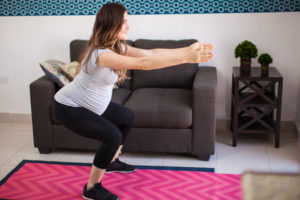
Here is how it goes:
-
Move to the position you want to strengthen.
-
If it’s a difficult position, like an outer range, make sure not to move further out than you can control and still hold a good position in.
-
Hold on to something if the position is very demanding.
-
Now focus on the position and contract the muscles.
-
Hold it for as long as possible and then relax.
-
Repeat this 3-5 times.
Many people will notice their muscles start to shake heavily during isometric training.
The reason for this is that you engage all the muscle fibers in that position at once and in those week positions your muscles are not used to it.
When we do a normal movement with our muscles some fibers will be turned on and some off. This will happen during the complete movement and we will often not notice anything.
However, when we do isometric we fire everything at once and require all the fibers to be engaged. This is not possible. Some will turn off as they fatigue and then turn on again, and this is why you experience the shaking.
Don’t worry about it. The shaking will disappear the stronger you become.


